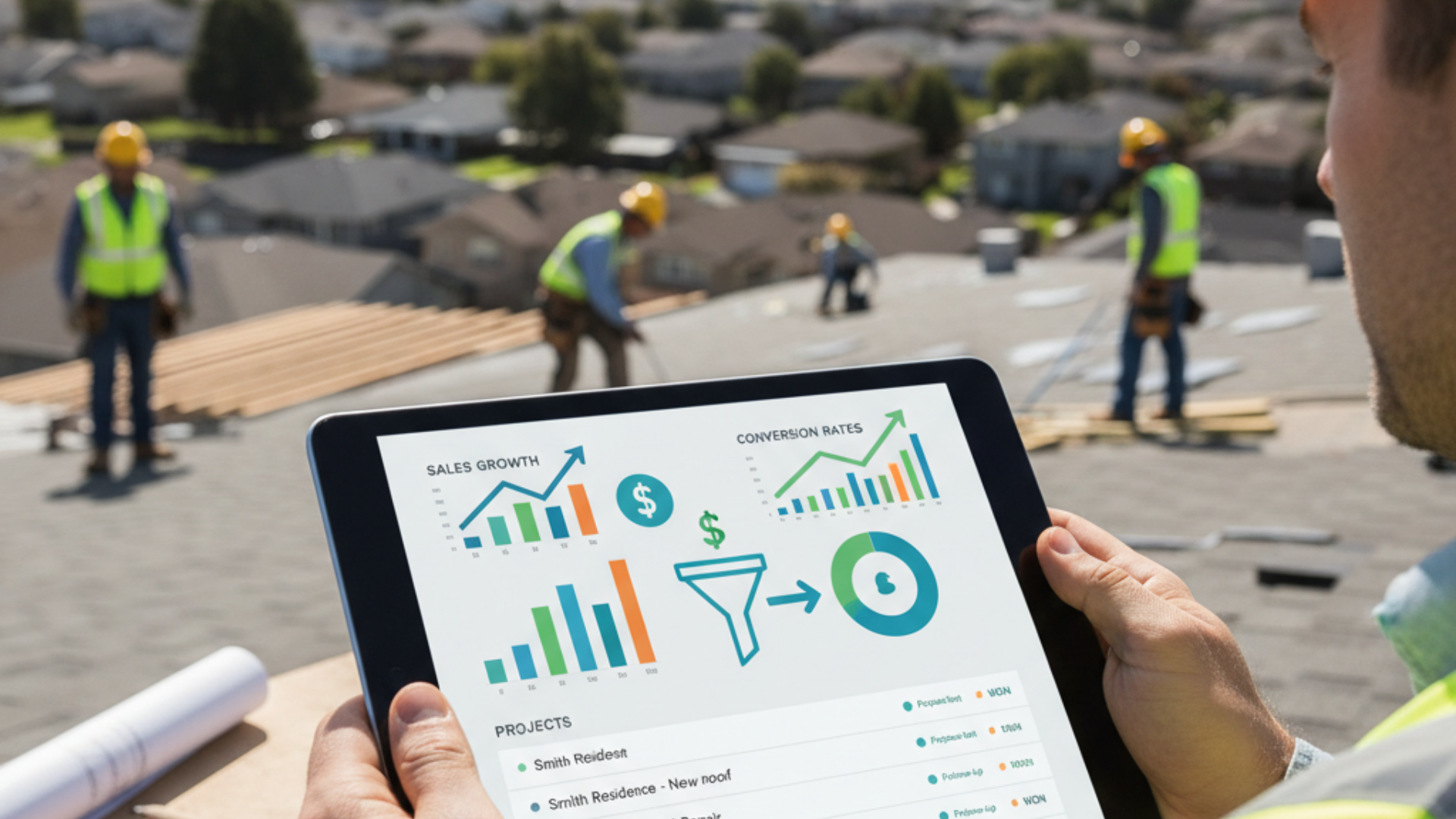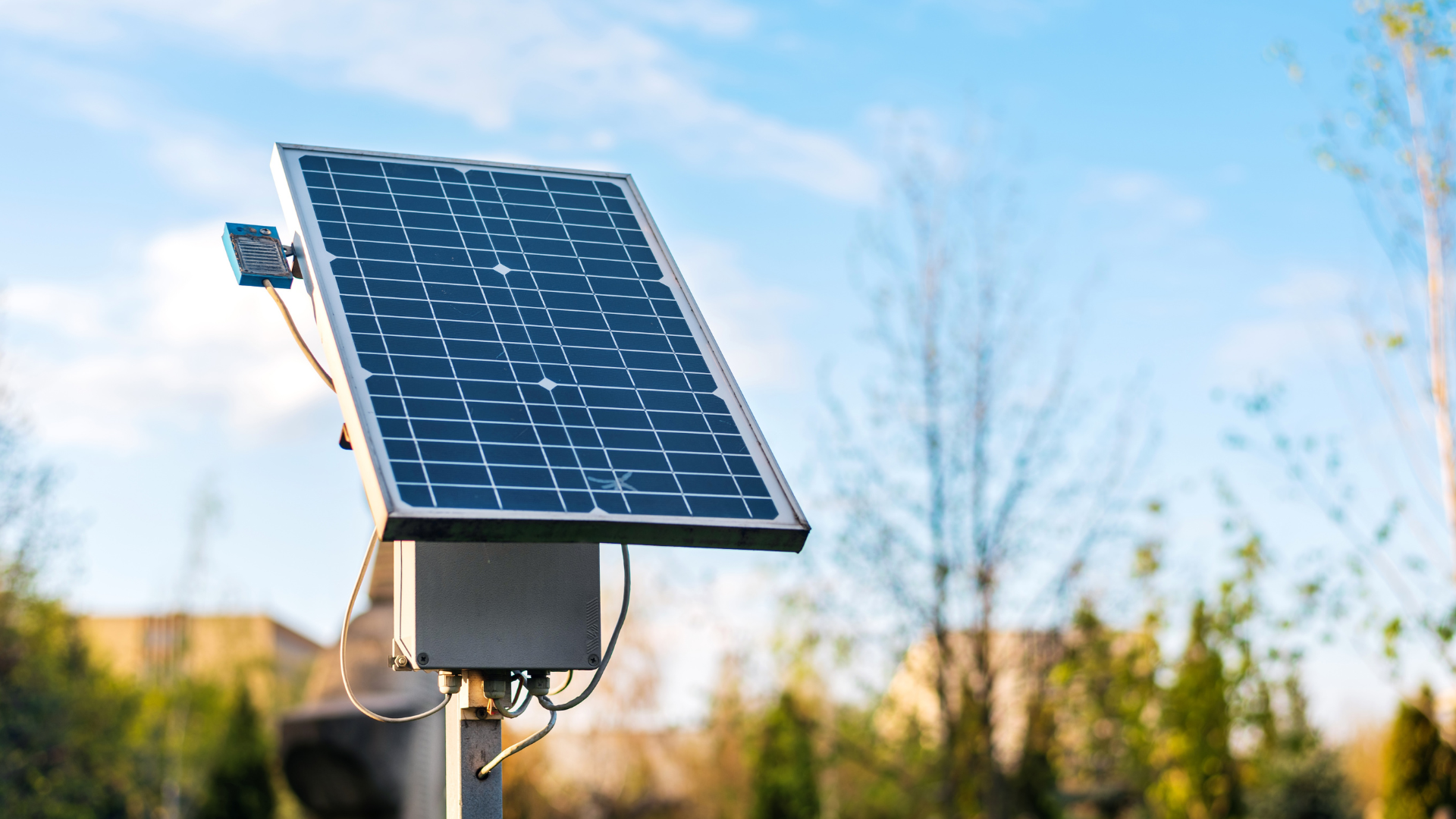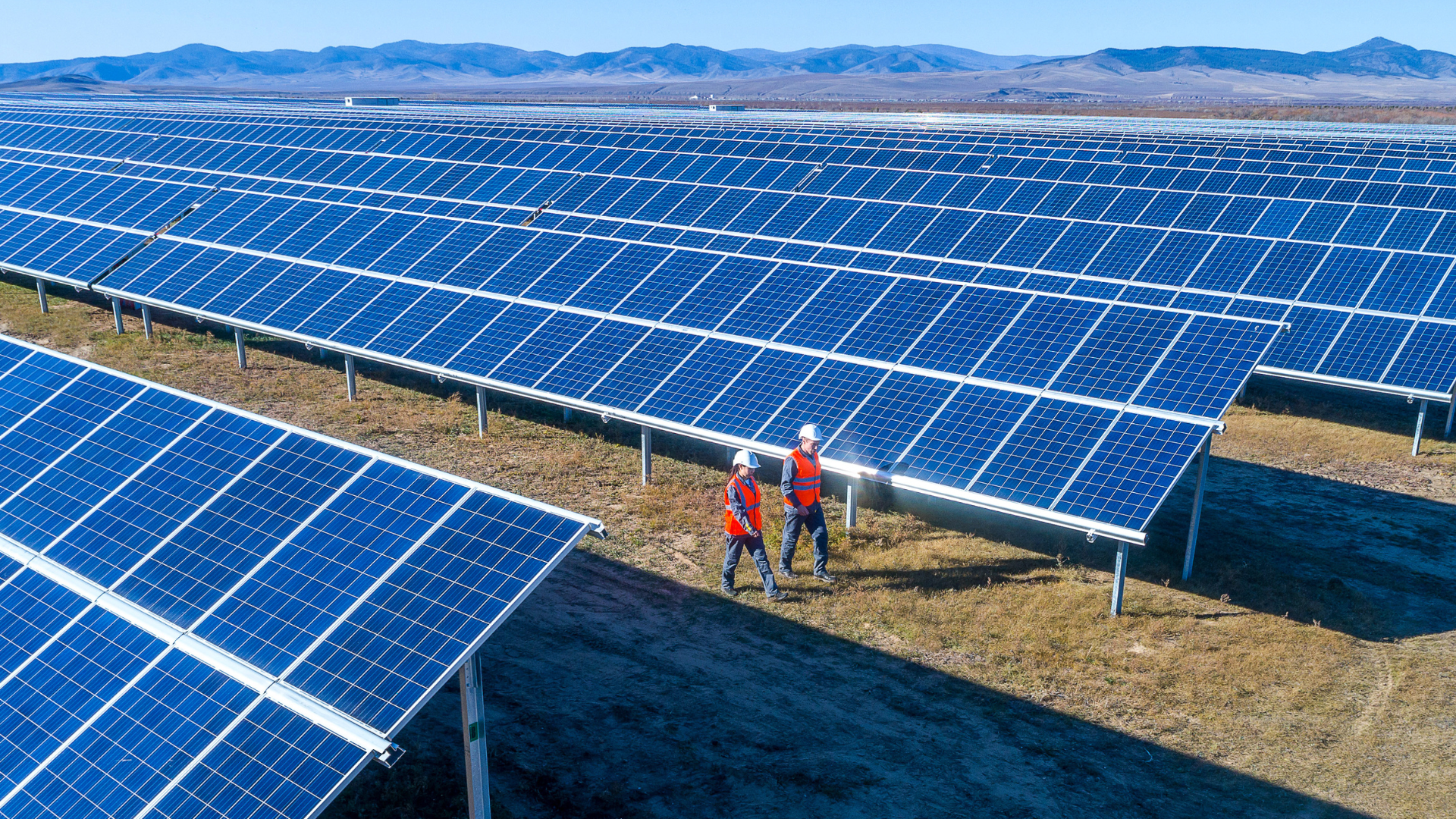June 11, 2025
Audio Overview: Listen & Learn
Precision is the most integral factor in photovoltaic (PV) design.
Whether you're working on residential installations or large-scale commercial projects, accurately estimating energy output isn’t just a technical step; it's paramount for closing deals, building trust, and delivering the value customers expect.
The days of relying solely on rough calculations or post-installation monitoring are behind us. With the advancement of solar design software, solar professionals can now estimate energy output in real-time during the initial design process.
This shift enables solar developers, contractors, and sales teams to create more innovative proposals, streamline workflows, and ultimately achieve more successful solar projects.
Key Takeaways
- Traditional methods struggle to consider dynamic factors such as tree shading, nearby buildings, seasonal sun exposure changes, and local weather variability.
- Solar design software instantly calculates energy output, improving design precision and proposal reliability.
- Instant projections enable sales teams to close deals more quickly with transparent and accurate estimates.
- Centralized platforms such as Sunbase synchronize sales, design, and engineering teams using real-time data and interactive visuals.
What Is Real-Time Solar Output Estimation?
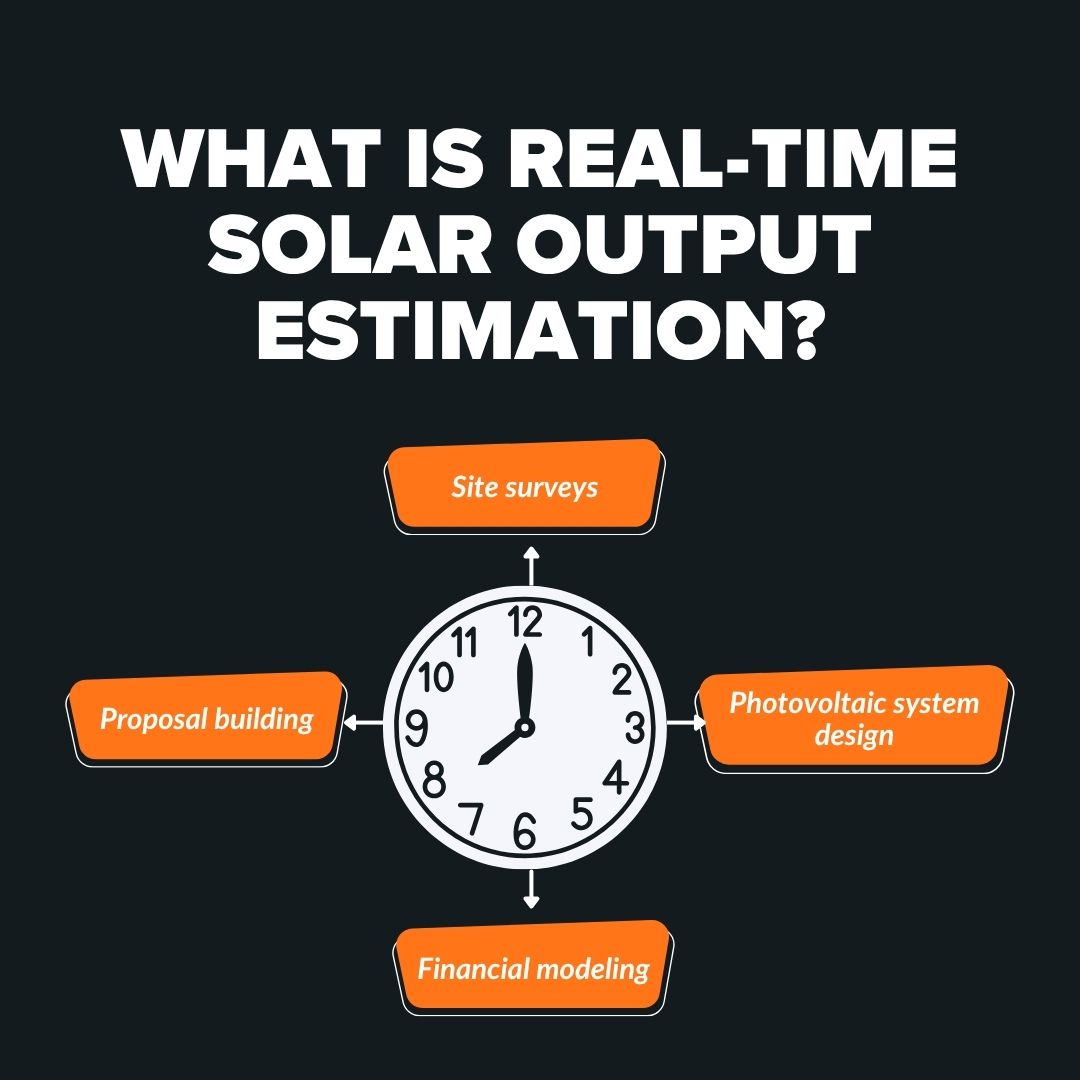
Real-time energy output estimation predicts the amount of energy a proposed PV system will generate as you design it, not after installation.
This estimation is dynamic, adjusting to changes in panel layout, shading, orientation, and more as the design and engineering evolve.
This isn’t just a technical feature. It’s a sales tool that can provide teams with more resources. Giving customers real-time estimates during consultations makes the sales process more efficient and transparent.
It’s also critical during the planning of a solar project :
- Site surveys
- Proposal building
- Financial modeling
- Photovoltaic system design
For a quick and thorough understanding of solar design software, refer to The Importance of Solar System Design in Maximizing Energy Output.
Why Traditional Output Estimation Methods Fall Short

Before the rise of modern solar software, estimating energy output involved considerable manual guesswork.
Designers and the engineering team needed to factor in:
- Solar angles
- Roof azimuths
- Average sun hours by location
- Weather databases
- Tilt and orientation
This was not only time-consuming but also often inaccurate. Traditional methods couldn’t easily account for
dynamic features and factors like:
- Tree shading and nearby buildings
- Seasonal changes in sun exposure
- Variability in local weather
Installers and sales reps risk inflating customers' expectations without accurate shading analysis and real-time data.
That disconnect led to lower close rates, distrust, and complicated post-sale conversations about costs.
What Factors Affect Solar Energy Output?

Even the best solar systems in the world can only perform as well as their environment allows them to.
That’s why getting an accurate energy estimate isn’t just about how many panels you install; it’s about everything happening around them. Many factors come into play and can all shape how much power your system produces.
Let’s break it down before we install :
- Location matters. A home in the south will have a very different solar outcome than one in the north. Your latitude, average sun hours, and even altitude can all impact production.
- Panel angle and direction: They make a difference. Based on your roof and location, panels tilted at the right angle toward the sun will perform better.
- Shading isn’t just an aesthetic concern: Trees, chimneys, utility poles, and neighboring buildings can cast shadows that block your panels from sunlight, even if only for an hour or two a day.
- Heat can be a sneaky performance killer: Believe it or not, solar panels produce less energy when they get too hot.
- Not all panels are created equal: Higher-efficiency models deliver more power from the same amount of sunlight. That’s why keeping your spec sheets current is key.
- System losses add up: Wires, inverters, and even dust can reduce output. There is usually a small percentage here and there, but together they matter.
- And of course, the weather: Cloudy days, heavy rain, and snow buildup affect your system’s daily performance in ways that spreadsheets can’t predict.
This is precisely why automated design and solar design software, such as Sunbase, is a game-changer. Instead of manually juggling all these variables or making rough estimates, the software combines them into a single, live, and dynamic simulation.
You don’t just see what the system might do; you know what it’s likely to do under real-world conditions. And that kind of insight? It turns a rough estimate into a trustworthy proposal and a curious homeowner into a confident customer.
How Modern Solar Design Software Works
Today’s best solar design software isn’t just about drawing panels on a roof. It’s about enabling your team to manage projects and make informed, confident decisions in real-time.
Advanced platforms integrate a combination of satellite imagery, LIDAR scans, and live weather and irradiance data to provide a clear and accurate representation of a system’s energy potential, even during the design phase.
Here’s what that looks like in action, which is part of our mission :
- Local irradiance and shading data help you understand how the sun interacts with each property throughout the year.
- Automatic roof pitch and azimuth detection eliminates the guesswork about panel angles, saving you time and reducing costly errors.
- 3D modeling lets you visualize panels, obstructions, and layout options for a ground mount in an open field or a tight residential rooftop.
- Live kWh projections and bill offset calculations allow you to instantly show homeowners or businesses what their system will produce and how much they’ll save.
- Automated stringing and layout suggestions ensure your design is not just efficient, but also installation-ready.
- Because it’s all real-time, any changes you make, like shifting a panel or adjusting tilt update projections on the spot.
This degree of accuracy transforms the landscape. Your sales reps can walk into appointments with answers, not estimates. Your design team can test and compare layouts with zero delays. And your customers? They get clarity and trust in your company’s solution.
Whether you’re designing for a small residential project or a sprawling commercial site, the right tools make all the difference, and they help you close deals faster with confidence.
For more information, refer to The Five Key Advantages of Using Solar Design Software.
Benefits of Real-Time Energy Output Estimation
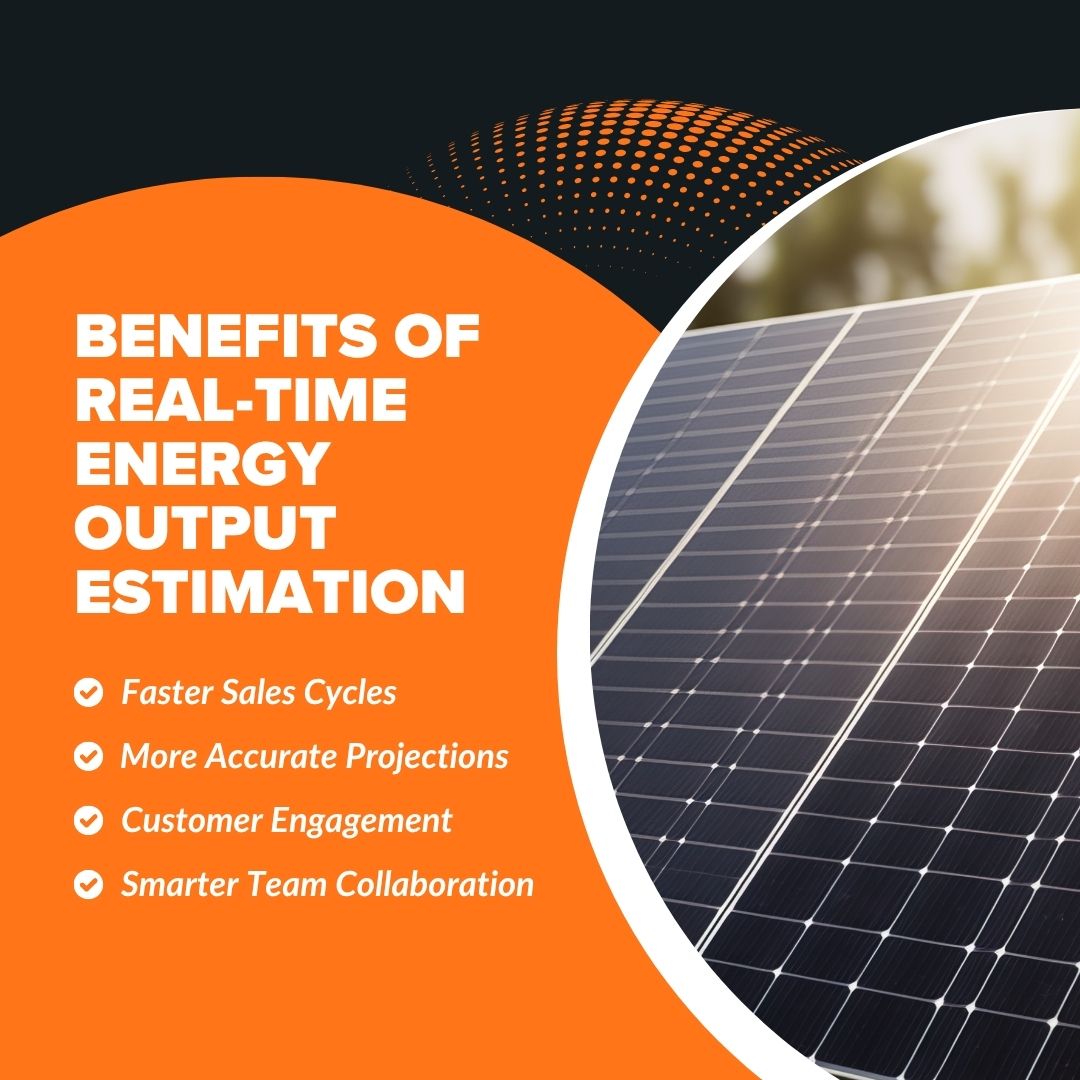
A. Faster Sales Cycles
No more waiting for engineering to confirm system specs. With the right tools, sales reps can offer accurate quotes on the first visit. That means fewer callbacks, quicker approvals, and a smoother sales process.
B. More Accurate Projections
Customers trust your solution more when they see a realistic, data-backed estimate. That confidence translates into higher close rates and fewer post-sale disputes, resulting in a more affordable solution.
C. Customer Engagement
Seeing real-time design changes and their impact on savings makes the pitch more interactive. Visual tools help customers understand the value of each panel placement and why your system outperforms others.
D. Smarter Team Collaboration
A centralized platform like Sunbase allows your engineering, sales, and design teams to work from the same data.
No more sending static PDFs back and forth. Everyone is on the same page with partners in real-time.
Now, are we missing out on something?
Common Mistakes to Avoid
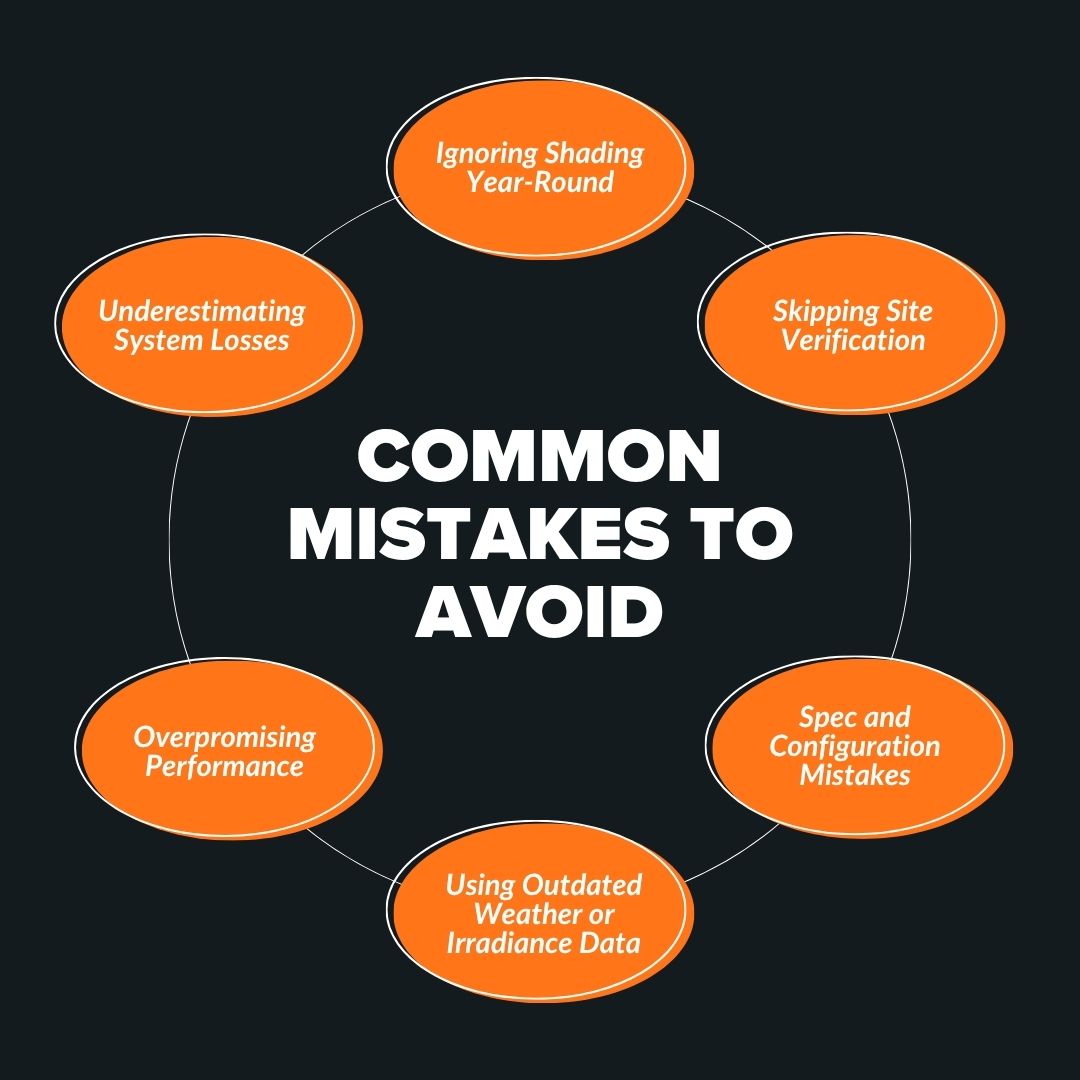
Even with top-tier solar design software, a few missteps can derail performance and customer trust. Here are the most critical pitfalls to avoid:
1. Ignoring Shading Year-Round
Shading isn’t static. Trees grow, new structures go up, and the sun's path shifts. Ensure your software performs seasonal shading simulations, not just a snapshot from spring or summer.
2. Underestimating System Losses
Every system has inefficiencies, like inverter losses, wiring resistance, and panel soiling. To prevent underestimating system output, it's essential to consider these losses.
3. Overpromising Performance
Inflated numbers might impress during a pitch, but they lead to frustration later. Build trust with honest, data-driven projections that hold up post-installation.
4. Using Outdated Weather or Irradiance Data
Old or generic climate files can skew system sizing. Use real-time, location-specific weather and irradiance data for more accurate modeling.
5. Spec and Configuration Mistakes
Small errors, such as incorrect tilt, azimuth, or equipment specifications, can significantly alter results. Use software with up-to-date equipment libraries and always double-check configurations.
6. Skipping Site Verification
Satellite imagery is helpful, but it doesn’t replace on-site checks. Confirm roof condition, shading, access, and structural integrity before finalizing a proposal.
Here's a guide on Integrating Solar Design Software into Your Work Process
Sunbase: Bringing Real-Time Solar Design to Life
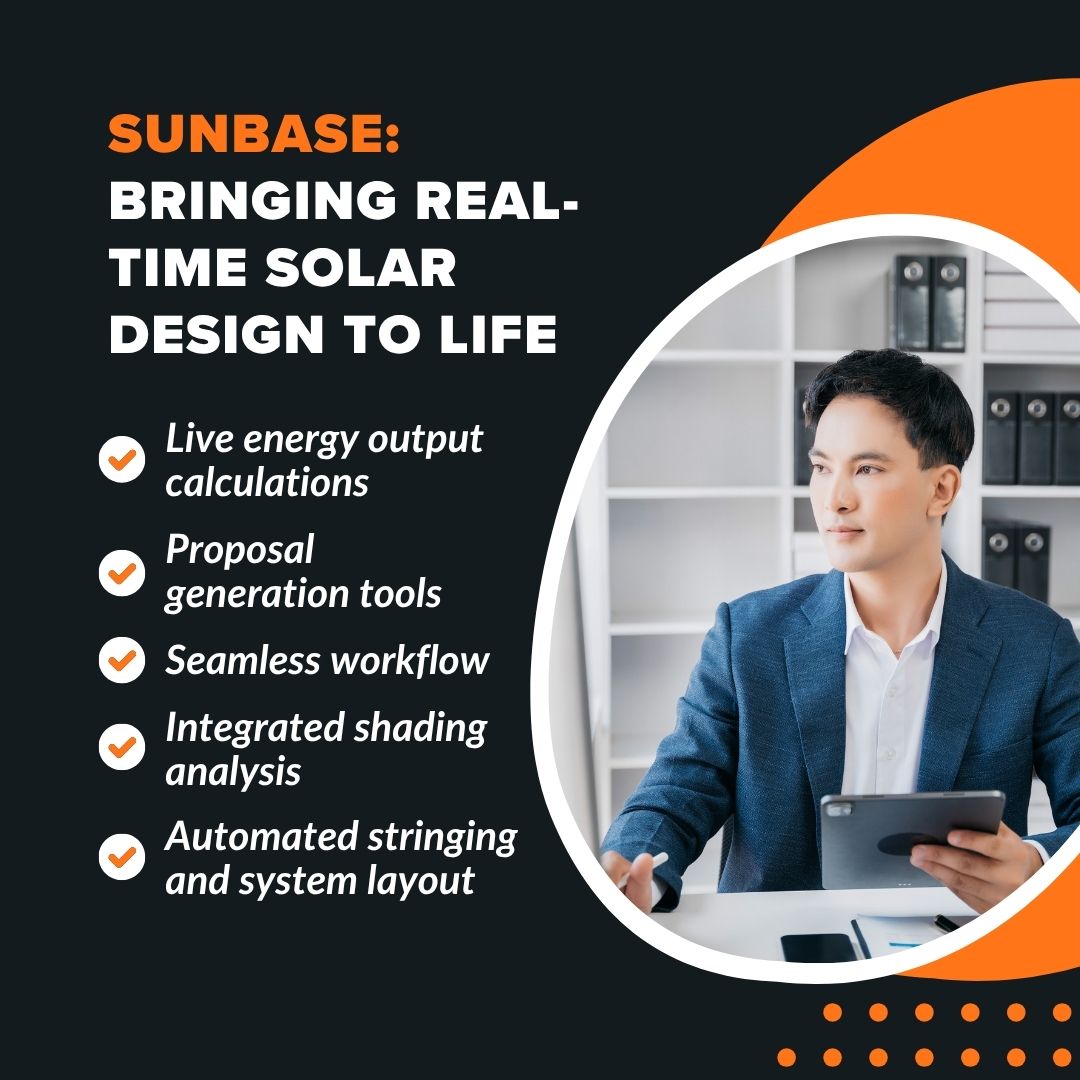
Sunbase has redefined solar design and added storage capabilities. With built-in automation, fast layout tools, and instant output calculations, it transforms the way solar professionals work.
Here’s how Sunbase streamlines the process:
- Live energy output calculations based on panel layout, shading, and location
- Proposal generation tools that use real data to forecast savings and ROI
- Seamless workflow from initial design to contract, no switching between tools
- Integrated shading analysis and 3D modeling for detailed site assessments
- Automated stringing and system layout features that reduce design time
Sunbase keeps your sales reps, installers, and engineers aligned and efficient from lead capture to a signed proposal.
That means faster closings, greater accuracy, and improved customer experiences.
Conclusion
Estimating solar energy output in real-time is now a necessity in the solar industry. Solar design software, such as
Sunbase, enables solar companies to streamline their processes, secure more contracts, and enhance the credibility of their proposals.
From automated layout to accurate energy predictions and streamlined workflows, real-time estimation transforms your sales and solar development process into a data-driven machine.
If your team is still using outdated methods or switching between different software, now is the time to rethink your approach.
Design with Sunbase
With Sunbase, you can design better, sell smarter, and achieve accurate, real-time results.
Why not schedule your demo today and discover the experience for yourself?
FAQ:
Q1: How can solar design software reduce design time?
Automated layout tools, along with instant shading analysis, financial analysis, and proposal generation, can really help speed up the design-to-sale timelines!
Q2: How does Sunbase stack up against other tools?
Sunbase solar software combines design, proposal, CRM, and project management workflows in a single platform. Many other tools necessitate switching platforms or manually exporting data.
Q3: Does it work for both residential and commercial projects?
Absolutely. Whether you need a small home or a multi-array commercial system, Sunbase can accommodate your needs.
Q4: What kind of support does Sunbase offer for solar development?
Sunbase provides onboarding, live support, and access to a comprehensive knowledge base to help your team get up and running quickly.
One Platform. Zero Chaos. Run Your Entire Business in One Place.
Sunbase replaces your CRM, proposals, scheduling, job tracking, and reporting tools — all inside one clean, connected platform.
About Sunbase
The All-In-One Platform to Run Your Entire Business
Sunbase helps you organize operations, streamline daily workflows, and manage everything - from first customer contact to final project deliver- in one connected system.
Our Mission
- Organize your business.
- Optimize your workflow.
- Automate what slows you down.
Why Businesses Choose Sunbase
One Connected Workflow
Replace scattered tools and manual processes with a single platform that brings together your team, tasks, customers, jobs, and performance data.
🌎 Global Presence
Serving the United States, Canada, India, LATAM, Australia, and 10+ international markets.
👥 11,000+ Users
Trusted by contractors, installers, project managers, sales teams, and field technicians.
🏗️ Built for All Sizes
From small contracting teams to fast-growing enterprises, Sunbase adapts to your workflow.
Useful Links For You
Stop Managing Your Business Manually. Automate It.
Sunbase automates workflows, reduces mistakes, and helps your team get more done - without hiring extra staff or juggling multiple tools.




